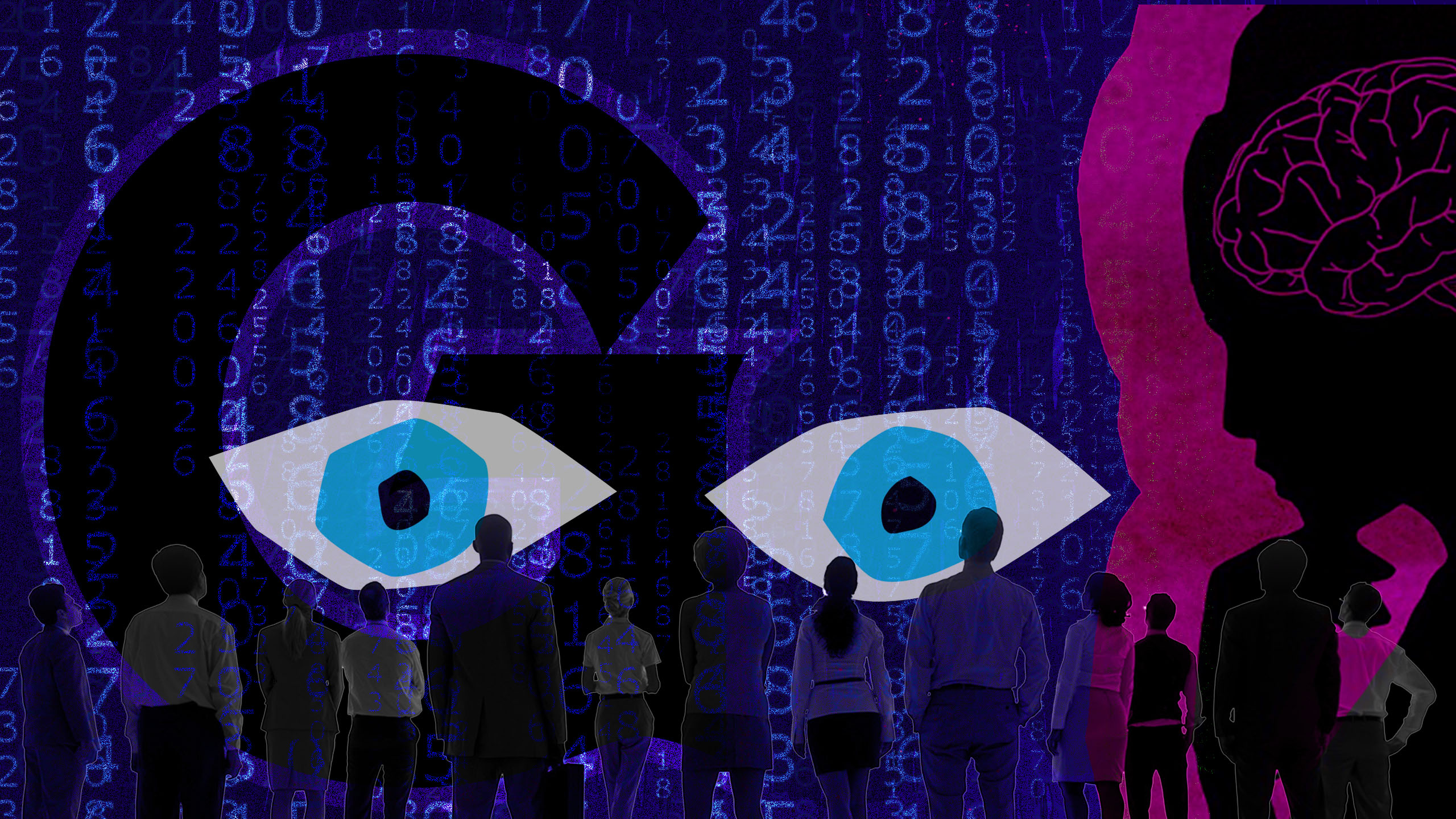When Allemai Dagnatchew (SFS ’22) began her final semester of college, the last thing she wanted to worry about was digital privacy. But within the first few days of spring 2022 classes, she found out that one of her professors mandated use of Perusall, a program that allows instructors to see how many students are doing their class readings.
Dagnatchew’s distrust of Perusall mirrors a larger sentiment college students have felt toward proctoring software and their utilization during the pandemic. The use of online test proctoring and similar programs skyrocketed over the last two years, with students reporting discomfort towards proctoring programs since the beginning of virtual learning.
“[Professors] are excited about these programs, and they don’t think it’s weird at all,” she said. “And that’s what I feel like is odd—that they think this is normal.”
Perusall, for example, gives professors access to the amount of time a student spends on a reading and how many of the assigned pages they’ve viewed. Despite students feeling like their privacy is compromised with this access and the return of most students to in-person learning, schools are still utilizing proctoring and similar invasive technologies.
The use of virtual learning tools has been subject to the fluctuating pandemic and schools’ virtual status, with the Omicron variant causing many colleges to move online for final exams and the beginning of the spring semester. As COVID-19 continues, students have been increasingly subject to excessive monitoring technologies—whether proctoring exams or scanning files—such as Proctorio, ProctorU, and Perusall.
In April 2020, the chief executive of Proctorio predicted the program would increase in value four to five times by the end of the year. He was right. Proctoring companies have reported up to a 500 percent increase in their usage, and between just Proctorio, ProctorU, and ExamSoft alone, over 30 million tests have been proctored during the pandemic. The necessity of these programs has brought the ethics of testing surveillance to the forefront, and in one case resulted in a U.S. Senate inquiry letter sent to Proctorio, ProctorU, and ExamSoft (which was mostly dismissed).
Oftentimes, these technologies give remote proctors excessive access to student devices, allowing them surveillance controls that are beyond necessary for proctoring an exam. While the initial increase in classroom technology use may have initially appeared to expand educational equity and access, the continued presence of surveillance technology has given professors the ability to monitor their students.
This surveillance access not only invades personal privacy, but also furthers an educational culture based in mistrust and power imbalances. It implies that there is a standardized, ordinary manner of learning, any deviations from which are suspicious.
Nick Tracy (COL ’24) cited the number of proctored exams as the deciding factor for dropping a sociology class this spring. Tracy stated that the course’s high amount of proctoring, even during in-person learning, was “the mark of a bad professor in my mind—it’s a big red flag.”
Many proctoring software programs give proctors access to student devices beyond the content of the exam, allowing them to view personal data or even take control of the cursor.
When Dagnatchew took her LSAT exam virtually last fall, she noticed that one of the proctors had deleted her computer background, a picture of her and her friends. Although one deleted background was not overly concerning, the proctor’s degree of access was. “There doesn’t seem to be any checks on [proctors] besides behavioral checks,” Dagnatchew said. “Theoretically, if they didn’t care about keeping their job, they could have gone through all my information.”
And for Tracy, access concerns include proctors’ lack of working knowledge about the specific software they are using. During an exam at Tracy’s previous college, a proctor gained access to Tracy’s computer and accidentally closed out the proctoring software, preventing him from working on the exam until the program was reopened.
“I got the impression that the people who were proctoring weren’t necessarily experienced with what they were doing,” they said about the experience. Instructors everywhere have had to learn new skills with Zoom and other technologies, but while accidentally muting oneself is harmless, total access to student data may have a more drastic impact.
Proctoring software in particular poses heightened concerns for students of color, a fact that has been especially true of Proctorio, a popular program that uses facial and movement detection to prevent cheating during online exams.
Proctorio has been widely criticized for failing to recognize students with darker skin tones, especially Black students, more than half of the time. Existing facial recognition software has been proven to be up to 100 percent more likely to misidentify Black and Asian faces than white ones. In some instances, students of color have had to use excess lighting just to be recognized. And when these humiliating measures remained unsuccessful, students were forced to pursue alternate exam options, an extra barrier white students did not have to face.
Of course, facial recognition isn’t the only issue. In reflecting on her experience as a Black student with classroom technology, Dagnatchew brought up how normalized surveillance can quickly become racialized.
“I think everything has the potential to be racialized when it comes to technology and surveillance,” she said. “Especially when you add innate assumptions people have about Black and brown people and laziness.”
Historically, white educators have stereotyped students of color as lazy, unintelligent, and even violent. These stereotypes are amplified in the context of surveillance technology, in which implicit racist assumptions go unchecked.
These assumptions in the academic space become increasingly problematic in the context of software that watches for “suspicious behavior.” Proctorio allows instructors to customize behavior settings, which are used to “help determine a student’s suspicion level.” But of course, what is considered as “suspicious” is totally subjective. Eye twitches and background noise can easily be misconstrued into academic dishonesty by a bad-faith instructor, with serious repercussions. This subjective approach can easily be influenced by racist assumptions, a phenomenon exacerbated by the use of surveillance technology.
The use of educational technology for surveillance purposes—intentional or not—also poses problems for first-generation and low-income (FGLI) students. Surveillance concerns add another layer of frustration to the problems that FGLI students already face—issues like the digital divide, in which FGLI students are less likely to have access to necessary technological devices and stable internet connections than their peers.
“If you’re going to force proctoring on people, which you shouldn’t be doing in general, you need to make sure that it’s accessible,” Tracy, who is a first-gen, low-income student himself, said. “You have to provide [students] with the means to do the stuff you’re forcing them to do.”
When required surveillance options depend on inaccessible technology, the digital divide becomes an even larger barrier to education.
Lack of access is not the only concern for FGLI students, though. It is also a matter of personal privacy. The most common example of this is the insistence of many instructors that students keep their cameras on at all times. Tracy, who commutes to campus and often participates in virtual class from their house, is a “firm believer that having cameras on shouldn’t be a requirement.”
Tracy sympathizes with professors, acknowledging that teaching to a screen full of black boxes on Zoom isn’t enjoyable. But given that in 2022, students still attend class from home, the option to leave the camera off is especially important for FGLI students who might not feel comfortable showcasing their surroundings, something that can often be an indicator of class status, even from a dorm room.
Michelle Ohnona, assistant director of diversity and inclusion initiatives at the Center for New Designs in Learning & Scholarship (CNDLS), believes that there is value in classes developing community guidelines for technology use and general accessibility. Ohnona draws this belief from her work as an instructor in both the Women’s and Gender Studies and Learning, Design, and Technology programs.
She is a proponent of giving students autonomy. “Ultimately, [we can give] both faculty and students some language to be able to say ‘I’m not comfortable being on camera all of the time,’” Ohnona said.“‘But here are some ideas for how I can be contributing to the class environment.’”
Such a solution would provide students with the option to avoid intrusive surveillance without interfering with the success of student engagement in class. Allowing for greater student choice also enables technology to improve educational access rather than focus on controlling student users.
Ohnona believes that considering alternate teaching and learning methods is a first step in increasing educational access. “The more we develop a palette of options for faculty and students, the more accessible our classrooms are going to be,” Ohnona said. “And the point of technology is to make it work for us. Claiming it and owning it as something that can help us learn better and live better is a good starting point.”
As we enter a new era in education, it is more essential than ever that we think critically about the way we introduce technology.
One common access issue pertaining to increased technological use is incompatibility between programs. To mitigate chronic headaches caused by hours spent staring at screens, Dagnatchew regularly uses Speechify, a text-to-speech app, to listen to her class readings. But because the app is incompatible with Perusall, which is required for her readings, she has been unable to use it for the class that mandates the program. The unnecessary use of Perusall has disrupted her most effective reading strategy, which she has developed throughout her time in college.
While a formal accommodation could address this individual problem, accommodations aren’t always the solution to inaccessibility. Rather, relying on accommodations to address individual access needs distracts instructors from creating a more accessible class environment for all students. Students like Dagnatchew—who may have conditions that aren’t necessarily accompanied with specific diagnoses or documentation, like chronic headaches—don’t always need an Academic Resource Center accommodation. Sometimes, they simply need empathy and a commitment to access that is independent of formalities.
The rise in technological inaccessibility shows that technology by itself won’t make education equitable; rather, it depends on how we choose to utilize it. As we enter a new era in education, it is more essential than ever that we think critically about the way we introduce technology.
For Tracy, technology isn’t about trying to replicate the in-person experience. It’s about using new resources to be more creative with the way we teach and learn. “We need to think about new ways of teaching and integrating technology into [the] curriculum in a way that isn’t just trying to mimic what we did in the past,” Tracy said. “You have to deal with these surveillance and privacy issues that make students very uncomfortable.”
The attempt to mimic in-person learning online not only creates additional issues of surveillance and privacy, but can prevent academics from striving for pedagogical innovation. Before trying to adapt a traditional exam to an online environment, professors must ask themselves: Is a proctored exam the best method of evaluating students’ learning? Are there more engaging and equitable methods that we could pursue?
Dagnatchew encourages professors to consider how their use of technology will impact all students. “How will it affect people who don’t have $100 to spend on textbooks?” she asked. “How will it affect people who have different accessibility needs? How will it affect students who have different racial backgrounds?”
Educators must rethink how trust is built between students and instructors, and examine where the desire to surveil students comes from. As we continue to integrate technology into the classroom, it should be done ethically.





bruh moment